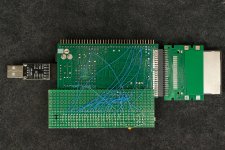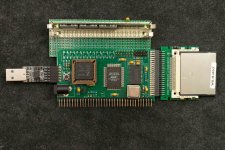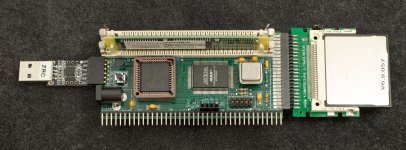lowen
Veteran Member
There is a tool to convert from the Altera MAX7128 format to Atmel ATF1508. I've not tried it myself, but it's called POF2JED; an app note about it is at https://ww1.microchip.com/downloads/en/Appnotes/DOC0916.PDFThat’s a good chip to use and you’ve got the right strategy to test the loose chips. You may find some of the loose chips are not programmable, that JTAG interface is not working. That is a common problem encountered with used CPLD. EPM7128S can be designed with free Quartus tool (rev 13 or before) which is far superior to WinCUPL.
So you could use Quartus to do the design, convert with POF2JED, and program it into an ATF1508. In theory, at least. I have been meaning to try this out with some of your designs, but just haven't taken the time or effort yet.



